No products in the cart.
NEWS
Growing Bountiful Apples: An Expert’s Guide to Thriving Apple Tree Care
Few things compare to the simple pleasure of biting into a crisp, juicy apple you’ve grown yourself. Apple trees are beloved additions to gardens and homesteads worldwide, promising a bounty of fresh fruit. However, as any seasoned gardener knows, nurturing these trees to their full potential requires diligent care and a keen eye for potential challenges. While apple trees are wonderfully rewarding, they can also be quite susceptible to various pests and diseases. Drawing from years of hands-on experience and scientific understanding, let’s dive into the essential practices for cultivating healthy, productive apple trees. This guide, brought to you by the content team at Biogarden.Asia, will help you anticipate issues and take preventative steps for a successful harvest.
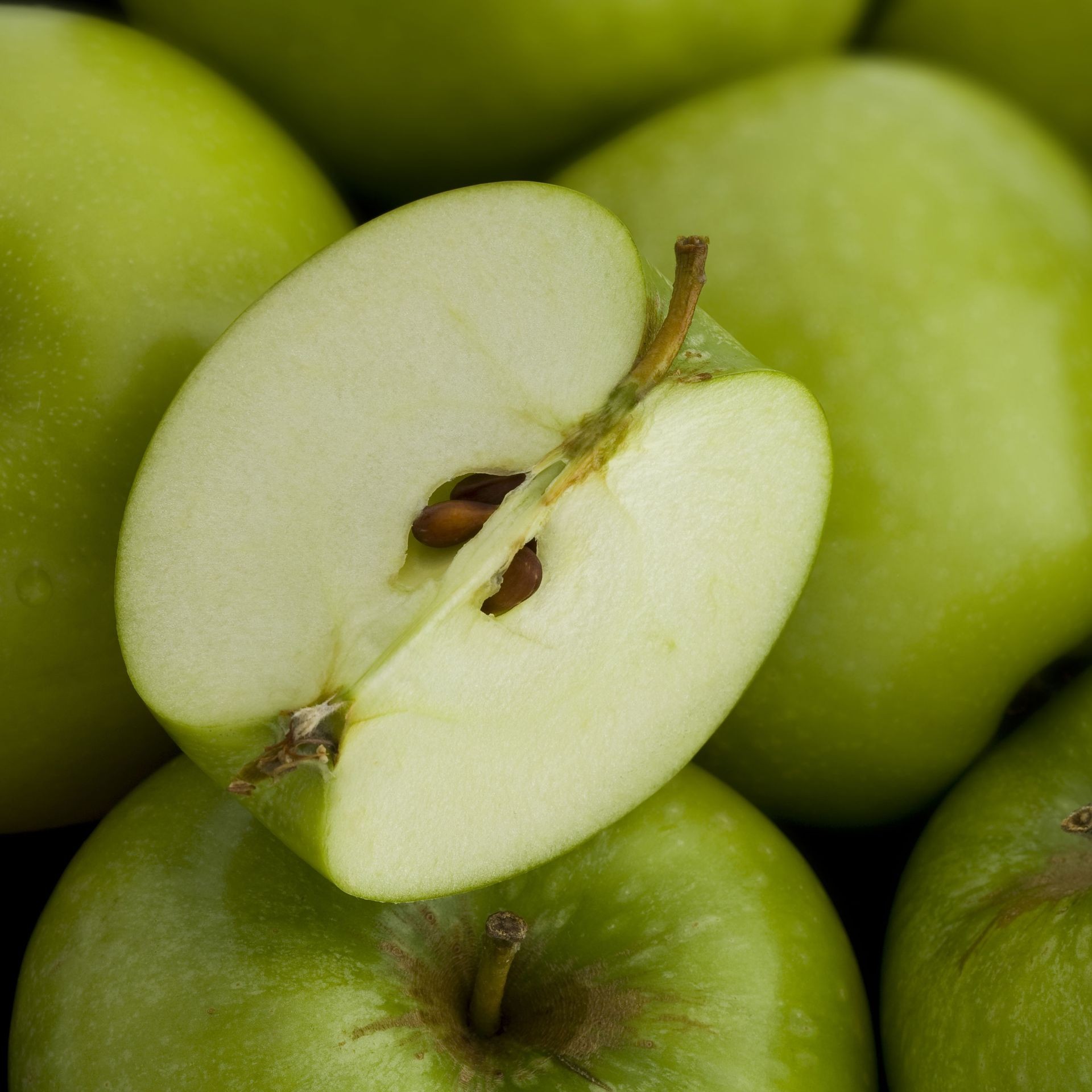 Cross-section of a fresh apple with visible core and seeds
Cross-section of a fresh apple with visible core and seeds
Getting Started: Planting Your Apple Tree Journey
Your apple-growing adventure can begin in several ways. While starting from apple seeds (or pips) can be a fun, educational project – a true labor of love that might yield unique results – it’s worth noting that trees grown from seed don’t always produce fruit identical to the parent apple and can take many years to mature. For a more predictable outcome and faster fruiting, most gardeners opt to plant young grafted trees purchased from a reputable nursery.
Choosing the right variety is crucial. Consider your local climate (USDA hardiness zones are a good reference) and pollination requirements (most apple varieties need a different variety nearby to produce fruit). Explore the vast world of apple types! From early season delights like the Earligold apple to popular varieties like Braeburn or the incredibly sweet Candy Crisp apple, there’s a perfect apple for almost every taste and growing condition.
Essential Care Practices for Vigorous Growth
Once your tree is in the ground (ensure it’s in well-draining soil with plenty of sunlight), providing consistent care is key to its long-term health and productivity.
Watering and Nutrition
Young trees need regular watering to establish their root systems. Mature trees are more resilient but will still benefit from supplemental watering during prolonged dry spells, especially when fruit is developing. The goal is consistently moist, but never waterlogged, soil.
Feeding your apple trees is equally important. While they are moderate users of most nutrients, apples particularly benefit from sufficient potassium and calcium. A soil test can provide precise recommendations, but generally, applying a balanced fertilizer designed for fruit trees in early spring is a good starting point. Based on expert recommendations, incorporating organic matter and ensuring adequate levels of key nutrients is vital for strong tree structure and quality fruit production. Products focused on providing readily available calcium and potassium can significantly enhance fruit quality and help prevent certain disorders.
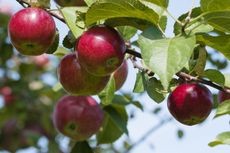 Applying fertilizer around the base of an apple tree for healthy growth
Applying fertilizer around the base of an apple tree for healthy growth
The Art of Pruning
Pruning might seem intimidating, but it’s a vital practice for apple trees. Proper pruning improves air circulation and sunlight penetration throughout the canopy, which helps reduce disease risk. It also shapes the tree for better fruit production and removes dead, damaged, or crossing branches.
One common task is removing “water sprouts.” These are vigorous, vertical shoots that often emerge from the trunk or main branches. As their name suggests, they primarily consume the tree’s energy without contributing significantly to fruit production. Removing them helps direct the tree’s energy towards developing fruit-bearing wood. Prune during the dormant season (late winter/early spring) for best results, except for removing damaged branches which can be done anytime.
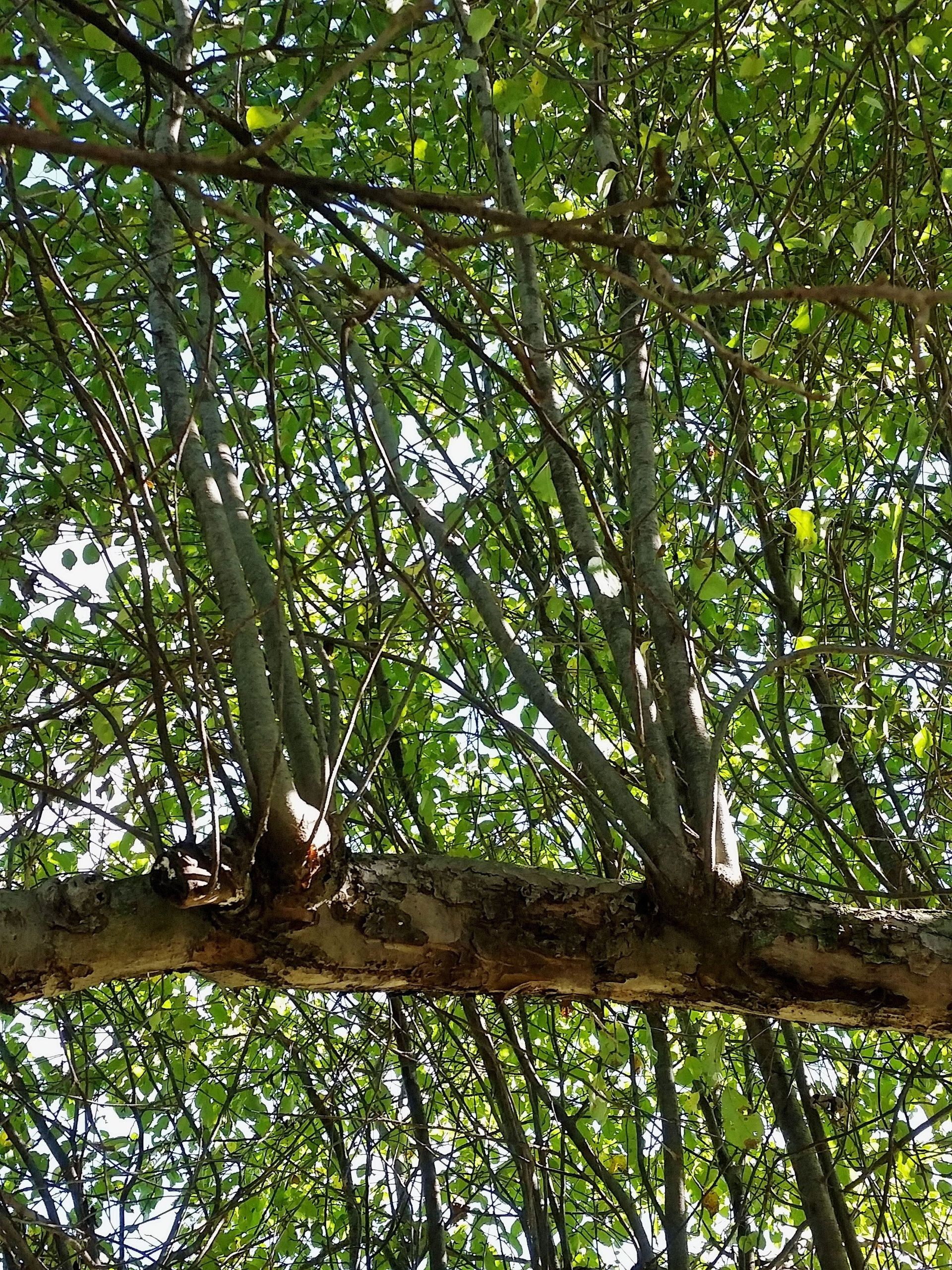 Water sprouts growing vertically on an apple tree branch
Water sprouts growing vertically on an apple tree branch
Battling Pests and Diseases
Apple trees can face a range of unwelcome visitors and pathogens. Recognizing the signs early allows for timely intervention, often preventing significant damage.
Common Fungal and Bacterial Issues
- Apple Scab: Causes dark, fuzzy spots on leaves and fruit. Can severely reduce yield and quality.
- Apple Blotch: Presents as dark, tar-like spots on fruit, leaves, and twigs. Affects appearance but usually doesn’t ruin the apple entirely.
- Black Rot: A serious disease causing leaf spots, cankers on branches, and a distinctive black, rotting area around the blossom end of the fruit. If you see black rot on apple trees, prompt action is needed to prevent spread.
- Cedar Apple Rust: A fungal disease requiring both apple trees and certain cedar/juniper species to complete its life cycle. Causes bright orange spots on apple leaves and sometimes fruit.
- Flyspeck: Appears as small black dots on the surface of the apple, often with sooty blotch. Primarily cosmetic but can affect appearance.
- Crown Gall: Bacterial disease causing tumor-like growths on the roots or lower trunk, often entering through wounds. Managing apple crown gall typically involves prevention and removing affected trees in severe cases.
- Apple Cotton Root Rot: A devastating soil-borne fungal disease causing sudden wilting and death, with a white fungal mat on the roots. Treating apple cotton root rot symptoms involves removing affected trees and potentially soil solarization or fumigation in large orchards, though prevention is key in home gardens.
Management for many diseases involves good sanitation (cleaning up fallen leaves and fruit), proper pruning for airflow, and in some cases, targeted fungicide or bactericide applications. Emphasizing tree health through balanced nutrition and proper watering, as advocated by Biogarden.Asia principles, is often the first line of defense, as healthy trees are more resistant.
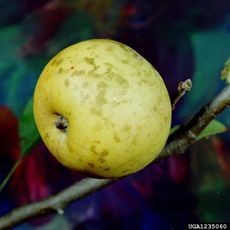 Apple fruit with characteristic spots from apple blotch fungus disease
Apple fruit with characteristic spots from apple blotch fungus disease
Pesky Apple Invaders
- Apple Maggot: The larvae of this fly tunnel through the fruit, creating brown trails and making the apple unusable. Recognizing apple maggot signs (dimpling on the fruit surface) and using traps or timely sprays can prevent an infestation from ruining your crop.
- Codling Moth: Larvae bore into the core of the apple. Prevention often involves timely insecticide sprays based on monitoring moth activity.
Integrated Pest Management (IPM) strategies, which combine cultural practices, biological controls, and targeted use of less toxic products when necessary, are highly effective. Healthy, well-cared-for trees grown in good soil are naturally more resilient to pest attacks.
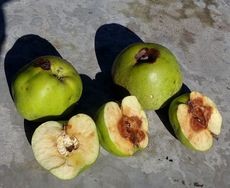 Green apple fruit cut open showing internal damage from apple maggots
Green apple fruit cut open showing internal damage from apple maggots
Understanding Physiological Disorders
Sometimes, issues aren’t caused by living organisms but by environmental factors or nutritional imbalances.
- Bitter Pit: Characterized by small, sunken brown spots on the surface and inside the fruit. This disorder is linked to calcium deficiency in the developing fruit, often exacerbated by inconsistent watering or excessive vigor. Learn about treating apple bitter pit by ensuring adequate calcium availability and consistent moisture.
- Soggy Breakdown: An internal browning and softening of the fruit tissue, often occurring in cold storage. It can be related to nutrient balance and storage conditions.
- Frost Rings: Rusty or brown, ring-shaped markings on the skin, caused by frost damage to the fruit surface early in development. The fruit is still edible, just cosmetically affected.
Addressing these disorders often circles back to providing optimal growing conditions: balanced nutrition, consistent watering, and protecting trees from extreme weather where possible.
 Apple fruit exhibiting external symptoms of bitter pit disorder
Apple fruit exhibiting external symptoms of bitter pit disorder
The Sweet Reward: Enjoying Your Harvest
After investing time and care, the reward of harvesting your own apples is immense. Whether you enjoy them fresh off the branch, bake pies, make sauces, or even press your own homemade apple cider, the flavor and satisfaction of homegrown fruit are unparalleled.
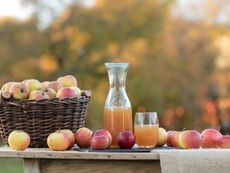 Freshly harvested apples and homemade apple cider on an outdoor table
Freshly harvested apples and homemade apple cider on an outdoor table
Conclusion
Growing healthy, productive apple trees is a journey that requires attention and care, but the rewards – fresh, delicious fruit and the beauty of the tree itself – are well worth the effort. By understanding the basics of planting, providing consistent nutrition and water, practicing proper pruning, and staying vigilant against pests, diseases, and physiological disorders, you can cultivate a thriving apple harvest year after year. Remember, nurturing the soil and supporting the tree’s natural defenses through quality care practices, consistent with the philosophy behind Biogarden.Asia, lays the foundation for success. Happy apple growing!



